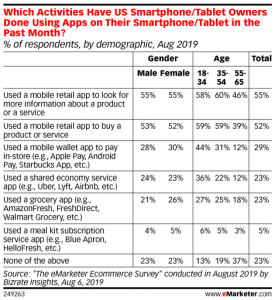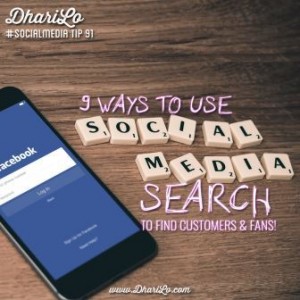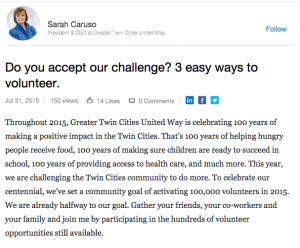Small business owners, bloggers, and giant corporations all use email marketing to stay in touch with their customers and prospects. There’s a good reason that all of these people with very different marketing goals all benefit from the use of email. Simply put, email allows you to create targeted messages for the different people that visit your website.
These groups are called segments, and they are the topic we are going to discuss today. Segmenting your audience occurs after you’ve studied customer feedback, on-site analytics, and the performance of various campaigns. The goal of creating segments is to deliver personalized emails to customers regardless of their stage in the buying cycle or interests.
Let’s look at 5 quick tips you should remember if you want to start segmenting your email list to increase sales and conversions. These tips will help you find ways to classify your existing customers, and also open the door to some exciting marketing opportunities once you build rapport with your subscribers.
Create a Memorable Welcome Campaign
Have you ever subscribed to an email list, only to not get a welcome email? Odds are, you probably felt confused and a little annoyed. An initial welcome helps new users get a feel for the brand and lets them know your future plans.
If you’re not segmenting new users, you’re missing out on significant customer research data. You could simply ask your new subscribers what kind of pain points they are struggling with in your industry. Once your team knows what kind of problems your customers are facing, they can create relevant content that addresses those issues.
Your welcome campaign should also set expectations for new subscribers. Letting people know when you will email them again and what kind of content they should anticipate will help you improve your open rate and improve customer relations.
Celebrate Special Days
Personalization marketing comes in many shapes and sizes. While broad segmenting is crucial to the success of your business, individualized marketing for users can also yield impressive results.
Create campaigns that segment users based on their birthdays, location-specific holidays, and more. Don’t forget to weave your personal message into the subject line of your email. Research shows that personalizing subject lines can result in a staggering 26% more opens, which is significant for brands of all sizes.
For example, you could offer a birthday promotion to users where they get 25% off of their purchase during their birthday or even birth month. Allowing more time to use the promotion may improve your overall sales, but you may end up falling short if you don’t use fear of missing out (FOMO) to your advantage.
Send Relevant Product and Content Suggestions
The main reason people subscribe to your email list is they want to see relevant promotions and blog content. Content is useful for building rapport with your audience and educating customers who are on the fence.
How do we know?
According to some surveys, nearly 70% of consumers said they like getting to know businesses through articles instead of ads. This statistic should send a clear message to business owners — consumers want to engage with brands trying to do more than sell a product.
Consumers are interested in working with businesses that deliver relevant content and promotions to their inbox. If you’ve done your research, you should have no problem figuring out where specific customers fit into your customer persona sheet.
Once you know what people want to see, segment your audience, and send emails to users based on their preferences. For example, the owner of an online pet store would push blog content about cats to customers that shopped within that category.
Split Test Within Segments
Split testing is a common practice that occurs on websites, specifically as it relates to contact forms. A/B testing, also known as split testing, is a practice in which a marketing team will change one element within a campaign to achieve different results.
In most cases, this is done on a large scale. But just because it’s typically done that way, it doesn’t mean you should run small scale split tests, especially if they show promising results. When the practice is used on contact forms, conversions improved by 304%, which can make or break some small companies.
Your testing can be something simple like a color change on your call-to-action, or a slight variation in your verbiage. Segmenting your audience and split testing different ad copies within those segments will help you improve your overall conversions and sales.
Stop Cart Abandonment
Shopping cart abandonment occurs when someone lands on your website, registers for an account, add items to their cart, but leave before they check out. This portion of your audience was so close to becoming customers that it would be a shame to let them go.
Luckily, there are ways you can segment your list and reach these consumers. The best approach here is to send 3 friendly reminders over a week. First, send a message in 24 hours if the person doesn’t check out. You’ll next want to send a reminder after 48 hours. If you still don’t get a response, consider sending one more email after a week.
Include a special promotion if you want to seal the deal and keep that customer interested in your brand. Shopping cart abandonment happens ways more than you think. Across all industries, the average abandonment rate is about 68%. In other words, this is a common problem that all business owners face. Segmenting your list can reduce the impact of shopping abandonment and improve your retention rate.
Back to You
These 5 tips will help you segment your email list for explosive results. The more time you spend working with your email leads, the more data you’ll have on your customers. You can use this data to segment your audience in new and exciting ways.
Growing your email list is challenging, but segmenting your list will make the process much easier. It’s easy to get discouraged when you see that things are not working out the way you would like. Instead of letting this hold you back, look for inventive ways to reach the various segments of your audience using email and improve brand trust, recognition, and overall sales.
Digital & Social Articles on Business 2 Community
(15)





